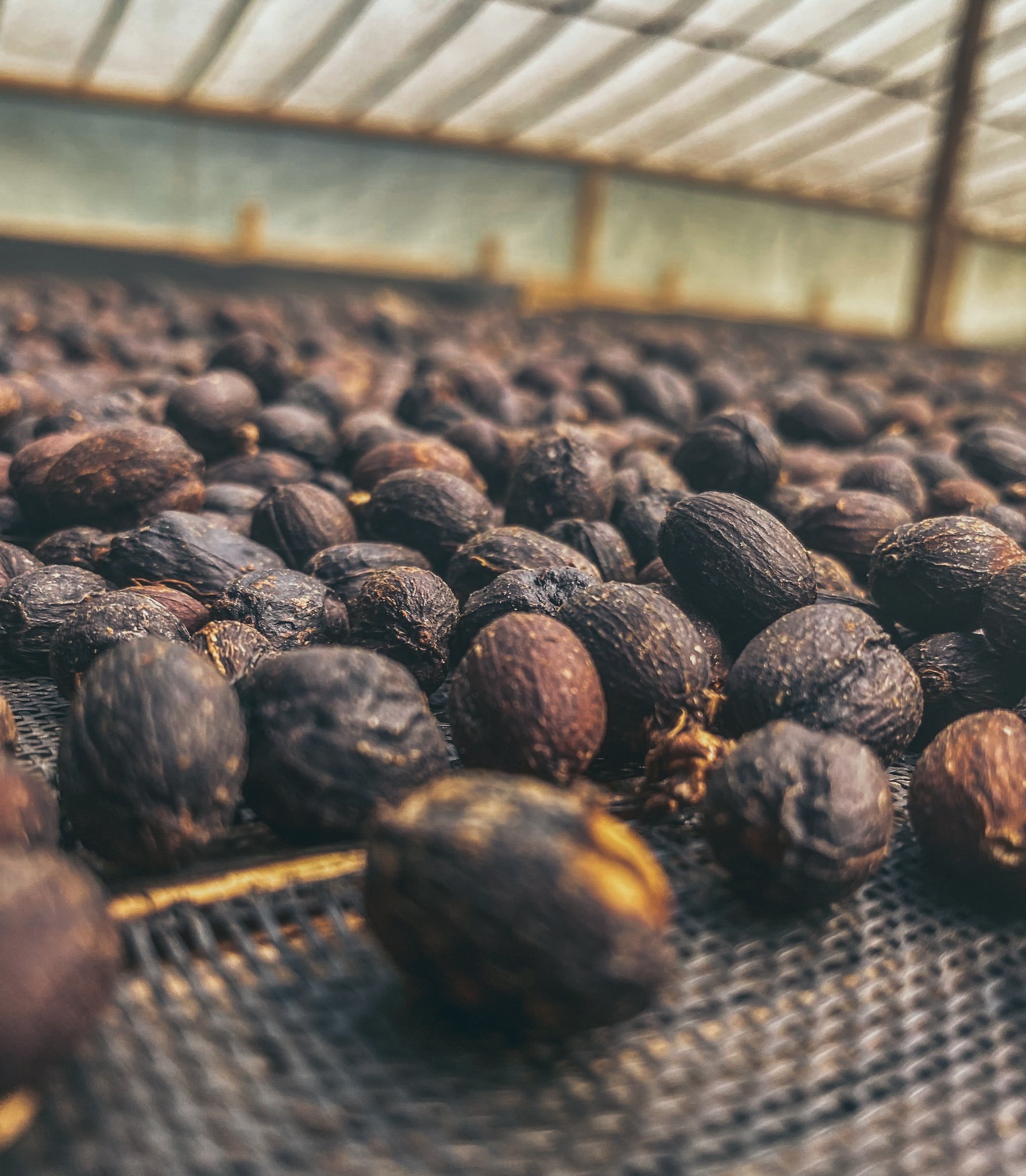P R O C E S S I N G M E T H O D S
Coffee processing and preparation involves separating the coffee fruit, flesh and skin from the coffee bean and is one of the most crucial aspects in coffee bean preparation. The exact method used to prepare and process the bean has a dramatic effect on the resulting flavors and body which a roasted bean and prepared cup of coffee will have.
Today, roasters and baristas are concentrating on this coffee processing step to assist in describing the prepared coffee. Given this new approach to coffee, farmers are now processing their harvested fruit using different methods.
N A T U R A L P R O C E S S
Also known as the dry process, natural processing is the most traditional method to process coffee. The process requires the fruit, once harvested to be spread out in thin layers to dry in the sun.
The intent is to enable air flow around the cherries, thus promoting even drying of the fruit and bean. Once the cherries are dried, the skin and dried fruit flesh are removed mechanically.
The green coffee bean is stored and “rested” for a set period of time prior to transport and roasting.
H O N E Y P R O C E S S
The honey process is used commonly in Central American countries such as Costa Rica and El Salvador.
The cherries are mechanically de-pulped, however a small amount of the flesh which is close to the bean remains. With the remaining flesh the beans are then dried using a similar process as natural.
The overall sweetness and body in the prepared coffee increases as the remaining flesh adds some sweetness to the bean.
The resulting roasted bean has some very positive qualities such as the smoothness of the prepared coffee, and the remaining hint of sweet aroma and flavor. This process is unique and results in a highly prized bean.
W A S H E D P R O C E S S
Also known as the wet processing method, this processing technique is another traditional method to process the fruit and bean.
This process requires all of the fruit flesh to be removed prior to drying. Removal of the fruit flesh is done with a machine called a de-pulper. After de-pulping, the beans are placed in a water tank where the fermentation process will remove the remainder of the fruit flesh.
The amount of time that the fermentation requires depends on the climate and altitude. In hotter regions the fermentation will take less time and in cooler regions more time in order for all of the fruit flesh to be removed. Usually the fermentation requires 24-72 hours and is watched closely to ensure a high quality bean is produced.
Once complete, the coffee beans are washed to remove any leftover flesh. The drying process is similar to the natural process.
A N A E R O B I C P R O C E S S
(G E I S H A)
Anaerobic ( meaning low oxygen) fermentation is one of the newest methods to process coffee and has received growing popularity amongst roasters and coffee drinkers alike. The anaerobic process is similar to the washed process, but the fermentation is done in fully sealed and oxygen deprived tanks.
This method is still quite new however anaerobic processed coffees have often exotic, smooth, and complex flavors. The resulting coffee bean is highly prized and growing in popularity around the world.




